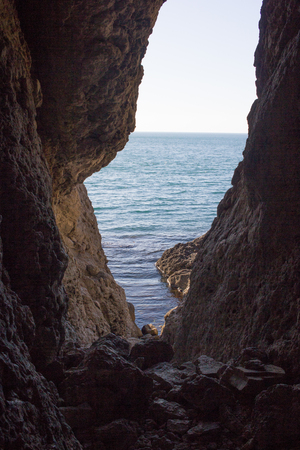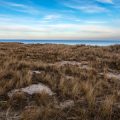Introduction to the Jurassic Coast and Isle of Purbeck
The Jurassic Coast, stretching for 95 miles along the southern coastline of England, stands as a testament to over 185 million years of geological history. Designated a UNESCO World Heritage Site in 2001, this remarkable coastline is renowned for its dramatic cliffs, fossil-rich beaches, and captivating landforms that chronicle the Earth’s ancient past. At the heart of this natural marvel lies the Isle of Purbeck—a striking peninsula in Dorset that serves as an ideal starting point for walkers eager to explore both the region’s scenic splendour and historical significance. The Isle of Purbeck offers not only sweeping coastal views and unspoilt countryside but also a gateway into England’s deep geological heritage, making it a favourite amongst ramblers and outdoor enthusiasts seeking an authentic British walking experience.
Historical Significance and Geological Wonders
The Jurassic Coast of the Isle of Purbeck is not only a haven for walkers, but also a living record of Earths ancient past. This UNESCO World Heritage Site stretches for 95 miles along the Dorset and East Devon coastline, and its portion within Purbeck is particularly renowned for its extraordinary geological diversity and historical resonance. As you hike these iconic cliffs and beaches, you are literally treading on layers of history that span over 185 million years.
Ancient Fossils: Windows to Prehistoric Life
The Jurassic Coast is famed for its rich deposits of fossils dating back to the Triassic, Jurassic, and Cretaceous periods. It’s commonplace to encounter fossil hunters combing the shores of Kimmeridge Bay or the shingle at Chapman’s Pool, searching for ammonites, belemnites, or even fragments of ancient marine reptiles. The regular exposure of new rock faces due to coastal erosion ensures that this area continually yields fresh scientific discoveries.
Geological Features: Layers of Time
The geology here is a textbook in stone. From the dramatic chalk stacks of Old Harry Rocks to the folded limestone strata at Lulworth Cove and Durdle Door, each formation tells a unique story about Earth’s shifting continents and changing climates. The table below highlights some key geological features found along the Isle of Purbeck stretch:
| Feature | Geological Period | Notable Characteristics |
|---|---|---|
| Kimmeridge Clay | Jurassic | Rich in fossils; source of oil shale |
| Lulworth Cove | Cretaceous/Jurassic | Unique cove formed by differential erosion |
| Old Harry Rocks | Cretaceous | Chalk sea stacks with spectacular views |
| Durlston Bay | Jurassic/Cretaceous boundary | Palaeontological hotspot; dinosaur footprints found here |
The Regions Role in British Heritage
Beyond natural wonders, the Isle of Purbeck has played an integral part in shaping British heritage. Corfe Castle stands as a sentinel over centuries of English history—from Norman conquests to Civil War sieges—while historic quarries provided Purbeck stone used in iconic landmarks such as Westminster Abbey. Hiking here immerses you not just in scenic splendour, but also in the narrative of Britain’s evolution through time. Each step along these paths connects walkers with generations past, making every journey along the Jurassic Coast a profound exploration of both landscape and legacy.

3. Essential Hiking Routes and Notable Landmarks
One of the most rewarding aspects of exploring the Jurassic Coast on the Isle of Purbeck is traversing its diverse network of walking paths, each offering a unique perspective on this UNESCO World Heritage site. The South West Coast Path, Britain’s longest national trail, winds its way dramatically along the clifftops, providing walkers with unparalleled views of the English Channel and the rugged coastline. This celebrated route is not only a physical challenge but also a journey through geological time, with each step revealing new facets of Dorset’s natural heritage.
Highlights Along the South West Coast Path
No hike along the Purbeck stretch would be complete without visiting Durdle Door, arguably one of England’s most iconic natural landmarks. This majestic limestone arch, sculpted by centuries of coastal erosion, offers a breathtaking spectacle that is both awe-inspiring and deeply photogenic. Just a short walk to the east lies Lulworth Cove, a near-perfect horseshoe bay that showcases textbook examples of geological processes at work. Both sites are easily accessible from the main footpath and offer opportunities for rest, reflection, and photography.
Old Harry Rocks: The Eastern Gateway
At the easternmost tip of the Isle of Purbeck stands Old Harry Rocks, a striking formation of chalk stacks rising sheer from the sea. This landmark not only marks the start (or end) of many walks but also provides panoramic vistas across Poole Bay towards Bournemouth and the Isle of Wight. The headland here is steeped in legend and offers an invigorating conclusion to a day spent hiking along the clifftops.
Corfe Castle: A Step Back in Time
For those seeking a blend of nature and history, detouring inland to Corfe Castle is highly recommended. This thousand-year-old fortress dominates its namesake village and serves as a poignant reminder of England’s medieval past. Many circular routes link Corfe Castle with the coastal path, allowing hikers to experience both sweeping seascapes and evocative historical ruins within a single excursion.
Whether you are an experienced rambler or new to British walking traditions, these essential routes and landmarks encapsulate what makes hiking the Jurassic Coast such an unforgettable adventure. Each path invites exploration, promising both scenic grandeur and moments of quiet reflection amid Dorset’s timeless landscapes.
4. Local Wildlife and Natural Beauty
One of the most captivating aspects of hiking along the Jurassic Coast of the Isle of Purbeck is its extraordinary biodiversity. This stretch of coastline is home to a remarkable range of flora and fauna, some of which are unique to this part of the world. As you traverse the scenic footpaths, you will encounter a mosaic of habitats—from windswept cliffs and rolling grasslands to ancient woodlands and secluded coves—each supporting its own distinctive wildlife community.
Flora: Wildflowers and Rare Plant Life
The chalk grasslands above the cliffs burst into colour in late spring and summer, with wildflowers such as pyramidal orchids, wild thyme, and cowslips painting the landscape. In more sheltered areas, you may find hart’s-tongue fern and rare plants like early gentian, which thrives thanks to the unique geology of the Jurassic Coast. Hedgerows brimming with hawthorn and blackthorn provide vital shelter for birds and insects throughout the year.
Fauna: Birds, Mammals, and Marine Life
Birdwatchers are in for a treat, with species such as peregrine falcons, kestrels, and skylarks frequently spotted soaring above the cliffs. The coastal waters are equally rich; if you are fortunate, you might glimpse bottlenose dolphins or even a basking shark offshore during the warmer months. Inland, Purbeck’s heathlands offer refuge to rare reptiles like the sand lizard and smooth snake—both emblematic of Dorset’s conservation success stories.
Notable Species Found Along the Jurassic Coast
| Category | Example Species | Status/Conservation Notes |
|---|---|---|
| Flora | Pyramidal Orchid Early Gentian Hart’s-tongue Fern |
Protected under local conservation efforts; early gentian is nationally scarce |
| Birds | Peregrine Falcon Skylark Kestrel |
Peregrines breeding on cliffs; skylarks declining nationally but stable here |
| Mammals & Reptiles | Bottlenose Dolphin Sand Lizard Smooth Snake |
Dolphins seen seasonally; reptiles protected under UK law |
Conservation Initiatives and Community Engagement
The rich biodiversity of the Jurassic Coast has prompted a range of conservation initiatives led by organisations such as the Dorset Wildlife Trust and Natural England. These groups work closely with local communities to maintain traditional grazing regimes that preserve open grassland habitats and control invasive species. There are also guided walks aimed at educating visitors about respecting nesting sites and minimising disturbance to wildlife. The combined efforts ensure that both residents and hikers can enjoy this natural heritage for generations to come.
5. Practical Tips for Ramblers
Planning Your Jurassic Coast Walk
Embarking on a hike along the Jurassic Coast of the Isle of Purbeck requires thoughtful planning to ensure a safe and enjoyable experience. Begin by mapping out your intended route, taking into account the distance, terrain, and any points of interest you wish to visit. The South West Coast Path is well-signposted, but it’s wise to consult up-to-date Ordnance Survey maps or reputable walking apps before setting off. Consider starting your walk from popular hubs such as Swanage, Corfe Castle, or Lulworth Cove for convenient access and amenities.
Public Transport: A Sustainable Approach
The Isle of Purbeck is well-served by public transport, making linear walks feasible without the need for car shuttles. Trains operate to Wareham, with connecting local buses (such as the Purbeck Breezer) providing scenic links to key trailheads including Swanage and Studland. During the summer months, additional seasonal bus routes help facilitate access to more remote sections of the coast. Always check timetables in advance, particularly outside peak season when services may be less frequent.
Recommended Kit for British Weather
The British weather is famously changeable, so being prepared is essential. Waterproofs are a must—pack a breathable jacket and over-trousers regardless of the forecast. Layering is key; opt for moisture-wicking base layers and a warm fleece or jumper. Good-quality walking boots with ankle support will serve you well on uneven coastal paths. Don’t forget a hat, gloves (even in summer), and sun protection: coastal winds can deceive you into underestimating UV exposure.
Navigation Considerations
While many sections of the Jurassic Coast path are clearly waymarked, it is prudent not to rely solely on signage. Carry a paper map and compass as backup in case your phone battery fails or signal drops out. Download offline maps if using a digital device and familiarise yourself with your route before departure. If visibility deteriorates due to sea mist or rain, take extra care at cliff edges and stick to designated paths—erosion can make some sections hazardous.
Final Thoughts for Responsible Rambling
The natural beauty and historical significance of the Isle of Purbeck deserve respectful enjoyment. Follow the Countryside Code: leave gates as you find them, take litter home, and keep dogs under control around livestock or wildlife. By planning ahead and equipping yourself appropriately, you’ll be well-placed to appreciate all that this UNESCO World Heritage coastline has to offer.
6. Where to Rest and Refuel
After a day spent exploring the rugged cliffs and timeless beauty of the Jurassic Coast, walkers will find no shortage of warm welcomes and hearty fare along the Isle of Purbeck. The local hospitality is an essential part of the Dorset experience, with traditional pubs, cosy tearooms, and characterful accommodations dotting the landscape. Among the must-visit establishments is The Square and Compass in Worth Matravers, renowned for its real ales, home-made pasties, and fossil displays—perfect for those keen to immerse themselves further in local history. In Corfe Castle village, The Greyhound Inn offers classic British pub dishes with stunning castle views from the garden. For a restorative cream tea or slice of Dorset apple cake, try The Scott Arms in Kingston or one of Swanage’s charming seafront tearooms. When it comes to overnight stays, options range from historic coaching inns to welcoming B&Bs such as Bankes Arms Country Inn in Studland, where exposed beams and roaring fires echo centuries-old traditions. For those seeking a more rural retreat, farm cottages around Langton Matravers provide tranquil settings amid rolling countryside. Wherever you choose to rest your feet, expect friendly service and the kind of authentic Dorset flavours that make every hike along this coast truly memorable.
7. Conclusion: The Lasting Appeal of the Jurassic Coast
The Jurassic Coast of the Isle of Purbeck stands as a testament to the enduring allure of Britain’s natural and historical heritage. For hikers, this stretch is far more than a scenic footpath; it is a journey through 185 million years of geological history, where every cliff face and pebble beach tells a story shaped by time and tide. The combination of dramatic sea views, ancient fossils underfoot, and picturesque villages such as Corfe Castle and Swanage, offers an immersive experience that seamlessly blends outdoor adventure with cultural enrichment. Whether you are captivated by the fossil-rich ledges of Kimmeridge Bay or inspired by the panoramic vistas from Durlston Head, each step along the coast reveals new layers of beauty and significance. It is this unique convergence of stunning scenery and rich historical context that ensures the Jurassic Coast remains a must-visit destination for those who seek both challenge and inspiration in their hiking pursuits. The sense of connection—to both nature’s grandeur and Britain’s deep past—leaves an indelible mark on every visitor, making a walk along these cliffs not just a day out, but an unforgettable exploration.


